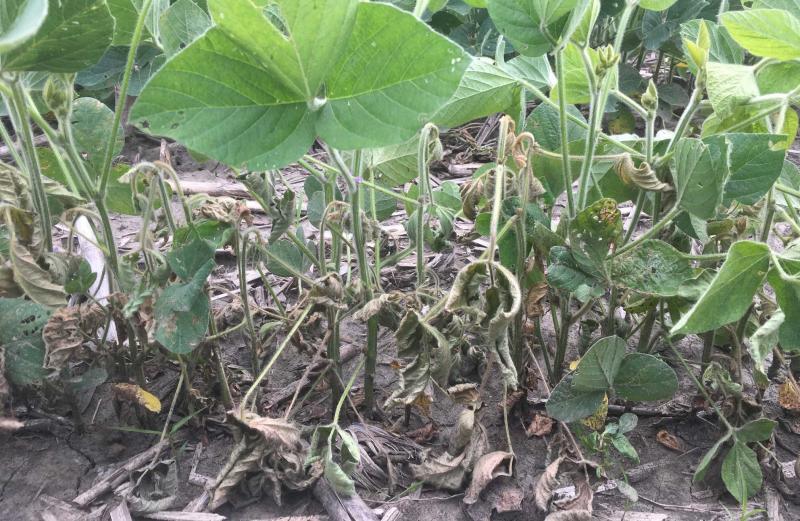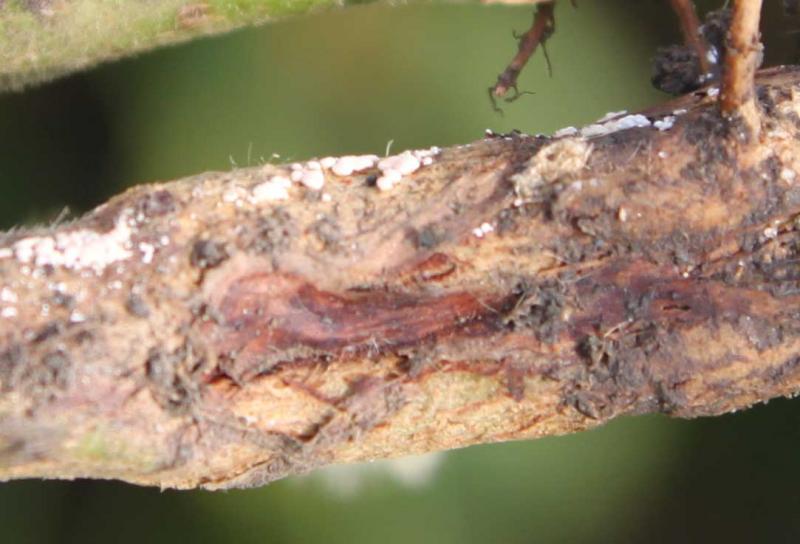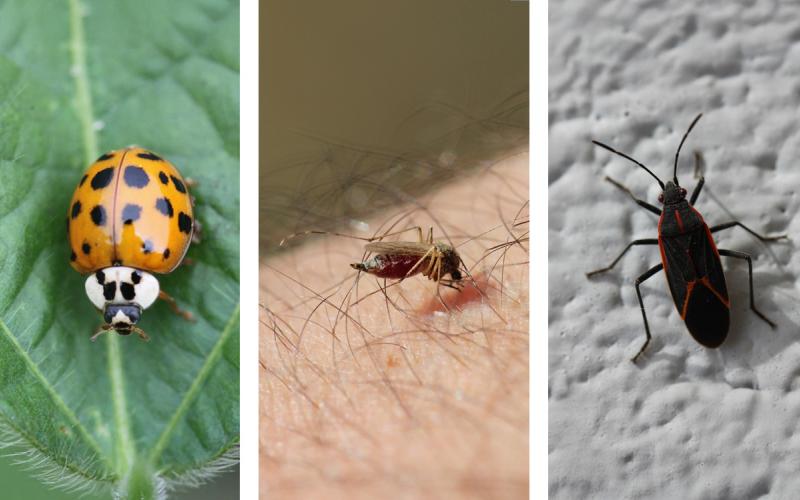Latest Observations

Although we have yet to capture any adult soybean gall midges, the reports and observations of soybean gall midge larvae in soybean are pouring in this week. In Clay and Union counties, infested soybeans are now showing signs, with plants beginning to wilt and die in some cases (Figure 1). At the SDSU Southeast Research Farm, we were able to find infested plants that are currently asymptomatic but definitely infested (Figure 2).

Management Strategy

So, what does this mean for soybean gall midge management? Well, foliar insecticides are not going to be the best option since plants are already infested. Once the larvae are underneath the epidermis, it is impossible to achieve contact with foliar insecticides. Research evaluating the efficacy of in-furrow insecticides and seed treatments is on-going and we will provide updates once we have some results. Unfortunately, our best bet at this point is to determine the extent and severity of the 2019 infestation.
We are going to continue our efforts of surveying soybean for soybean gall midge in 2019. There are a few signs that can be used to target soybean for dissection to determine the presence of soybean gall midge larvae. The first thing to watch for is stems that are showing signs of swelling and/or discoloration near the soil surface (Figure 3). Once one of these plants is identified, remove it from the soil and slowly remove the epidermis from the discolored area. We have a nearly 100% success rate with finding soybean gall midge in plants with these symptoms. Although we will be scouting for soybean gall midge infestations, we are also interested in having anyone with potentially infested fields to send us an image of the plant and also any larvae that might be observed. To monitor the next generation of soybean gall midge, we will be placing green sticky cards in the fields.
For up-to-date reports of infested counties, follow Adam Varenhorst on Twitter.


